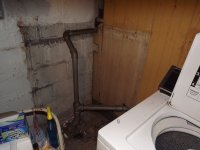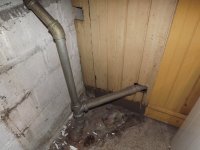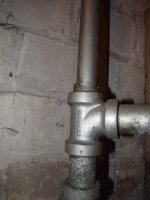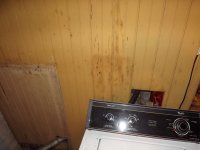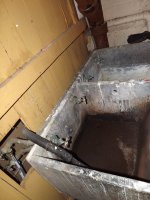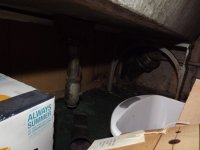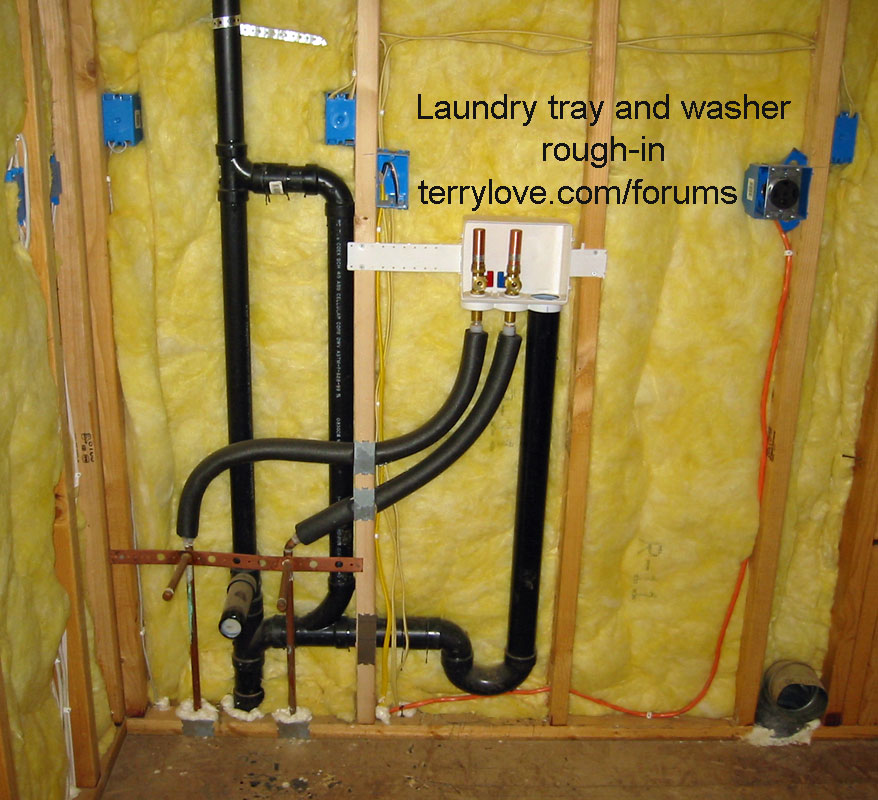JaCkaL829
Member
Hello,
I just registered for this forum as I've been Googling information on my above topic, and this seemed to be the place in DIY and plumbing. I am happy to be here, and hope to get some information on my setup which is unique to me, but probably not many of you.
I'm in the process of remodelling my basement, and the laundry room is part of my basement. I have yet to touch anything in the basement, and after photographing it, it's long overdue. These fixtures/drain seem original to the house (1920's) all of my other plumbing (kitchen, powder room, and main bathroom) has been updated with PVC tied into the cast iron drain pipe.
Right now you can see the drain for my washing machine is into a very old, and large stone sink, which doesn't seem so sanitary. The room where the stone sink is in has been raised about 4-5" I'm guessing for the toilet drain. I would like to replace the large stone sink, with a smaller, compact slop sink, while at the same create a standpipe for my washing machine. I'm hoping I can put both P-Traps on the same horizontal line.
From what I've read code is the standpipe must be a 2" pipe as it can backup which makes sense. I *believe* I have a 2" pipe right now (horizontal) pipe from the vertical wye. I measured the diameter of my other piping that is 1.5" and the outside circumference is smaller than that pipe. So I'm looking for suggestions as to what to do. I don't think the work itself is incredibly difficult, I just want to do it correctly the first time. The planning seems to be all the work.
I was thinking if I cut out the vertical cast wye, and put a new PVC sanitary tee? in it's place? Attach the PVC sanitary tee with no hub couplings into the vertical CI vent and into the CI vertical sewage. From there can I make a horizontal line that has a wye, 1 going to a P trap into the slop sink, the other going to a P trap going directly into the standpipe.
If there are better alternatives than what I'm initally thinking, please let me know.
My Goal for this is to replace the toliet (next to the slop sink), re-tile the floor, and replace the panel wall behind the washing machine. I will have to replace the water supply lines as they are quite old, and won't work with my new setup. I will probably make a new wooden cabinet to cover the drain, which as you can see in my pic is what was done previously. I just plan on making my cabinet easily removable in case I need access to the area.
I know a plumber, but he is not cheap, and I've seen his work and feel I can do similar as I'm pretty handy, and my father and friend are quite proficient in plumbing. I would be willing to use him if need be, but I figured I'd ask on here first.
I'm sorry if I'm misusing terms, a lot of what I read is somewhat confusing regarding sanitary tees, wyes, couplings, etc.
Thanks!
I just registered for this forum as I've been Googling information on my above topic, and this seemed to be the place in DIY and plumbing. I am happy to be here, and hope to get some information on my setup which is unique to me, but probably not many of you.
I'm in the process of remodelling my basement, and the laundry room is part of my basement. I have yet to touch anything in the basement, and after photographing it, it's long overdue. These fixtures/drain seem original to the house (1920's) all of my other plumbing (kitchen, powder room, and main bathroom) has been updated with PVC tied into the cast iron drain pipe.
Right now you can see the drain for my washing machine is into a very old, and large stone sink, which doesn't seem so sanitary. The room where the stone sink is in has been raised about 4-5" I'm guessing for the toilet drain. I would like to replace the large stone sink, with a smaller, compact slop sink, while at the same create a standpipe for my washing machine. I'm hoping I can put both P-Traps on the same horizontal line.
From what I've read code is the standpipe must be a 2" pipe as it can backup which makes sense. I *believe* I have a 2" pipe right now (horizontal) pipe from the vertical wye. I measured the diameter of my other piping that is 1.5" and the outside circumference is smaller than that pipe. So I'm looking for suggestions as to what to do. I don't think the work itself is incredibly difficult, I just want to do it correctly the first time. The planning seems to be all the work.
I was thinking if I cut out the vertical cast wye, and put a new PVC sanitary tee? in it's place? Attach the PVC sanitary tee with no hub couplings into the vertical CI vent and into the CI vertical sewage. From there can I make a horizontal line that has a wye, 1 going to a P trap into the slop sink, the other going to a P trap going directly into the standpipe.
If there are better alternatives than what I'm initally thinking, please let me know.
My Goal for this is to replace the toliet (next to the slop sink), re-tile the floor, and replace the panel wall behind the washing machine. I will have to replace the water supply lines as they are quite old, and won't work with my new setup. I will probably make a new wooden cabinet to cover the drain, which as you can see in my pic is what was done previously. I just plan on making my cabinet easily removable in case I need access to the area.
I know a plumber, but he is not cheap, and I've seen his work and feel I can do similar as I'm pretty handy, and my father and friend are quite proficient in plumbing. I would be willing to use him if need be, but I figured I'd ask on here first.
I'm sorry if I'm misusing terms, a lot of what I read is somewhat confusing regarding sanitary tees, wyes, couplings, etc.
Thanks!

